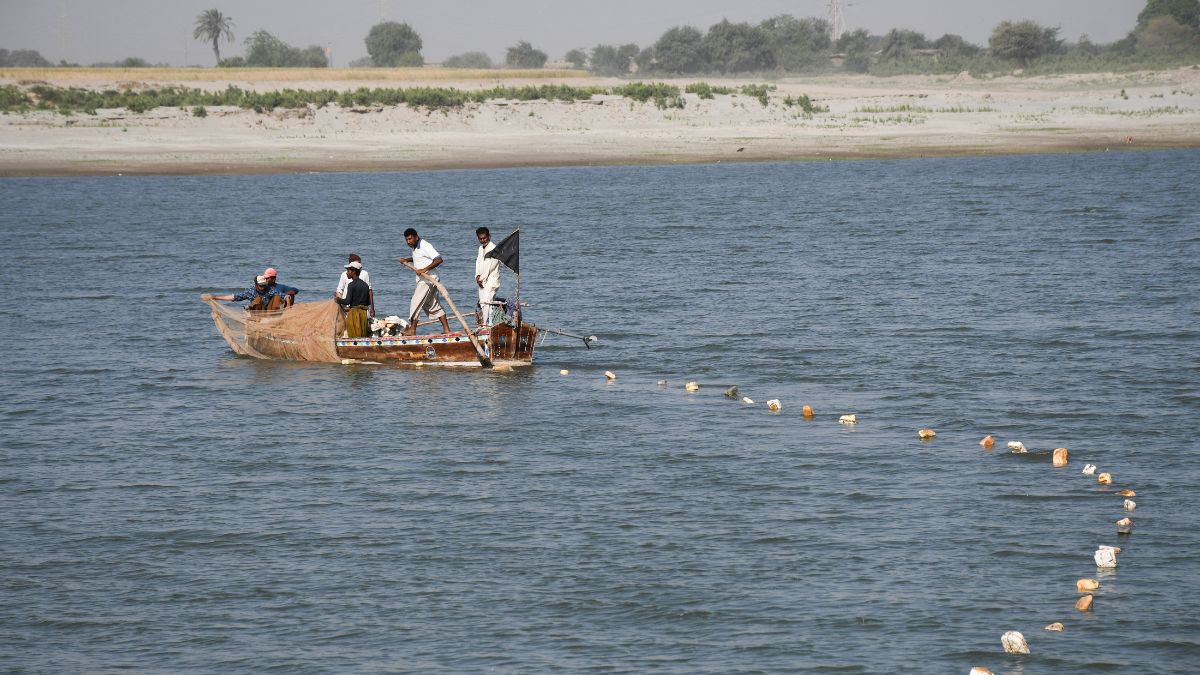A new canal project in Pakistan has drawn the ire of people from the southern province of Sindh and is threatening Prime Minister Shehbaz Sharif’s governing alliance. There are increasing fears that the project would lead to a potential water crisis in the southern parts of the South Asian country.
Pakistan plans to build six canals under an ambitious agricultural project. However, the proposed canal in the Cholistan desert has sparked widespread protests in Sindh.
Here’s why.
What’s Pakistan’s agriculture project?
The Pakistan government launched a $3.3 billion project called the Green Pakistan Initiative (GPI) in February in the presence of Pakistan Army chief General Asim Munir.
Hailing Punjab as the “powerhouse of Pakistan’s agriculture”, Munir said the army would continue to back the country’s economic growth, reported Al Jazeera.
The Green Pakistan Initiative hopes to boost food security in the South Asian nation through corporate farming.
Agriculture makes up about 25 per cent of Pakistan’s gross domestic product (GDP) and provides 37 per cent of its jobs.
The scheme aims to modernise the agricultural sector, including by bringing new technologies like drones and providing high-yield seeds and fertilisers to farmers.
Under GPI, six canals will be constructed across Pakistan, including in the Cholistan desert in the Punjab province. As per a Nikkei Asia report, the government will spend $750 million to build a 176-kilometer-long canal in Cholistan to irrigate 1.2 million acres of barren lands in the desert.
Cholistan Canal and Indus rivers
Pakistan President Asif Ali Zardari gave a nod to construct “six strategic canals” last July.
The proposed Cholistan canal, now renamed as Mahfooz Shaheed Canal and System, is the largest and is facing stiff objections in the Sindh province. It has a total capacity of 4,120 cusecs (116,665 litres/second) and is likely to be completed by mid-2030, reported Al Jazeera.
As per the Indus Waters Treaty (IWT) , India controls the eastern rivers of Sutlej, Ravi and Beas, while Pakistan controls the western rivers — Jhelum, Chenab, and Indus.
The Pakistan government claims that water for the Cholistan canal will come from excess floodwaters from the Sutlej River and river water from Punjab.
Rivers flow downstream from Pakistan’s Punjab province to Sindh in the south.
Experts have questioned the plan to rely only on floodwater for the canal. Speaking to Al Jazeera, Naseer Memon, an Islamabad-based environmental specialist, said the water flow from the eastern rivers controlled by India has been gradually plunging due to the construction of dams and climate change.
“If you look at the flow data, between 1976 and 1998, the average flow was 9.35 million acre-feet (MAF). From 1999 to 2022, it has dropped to just 2.96 MAF,” he said.
Protests over Pakistan’s canal project
Nationalist parties, writers, social activists, students and religious figures in the Sindh province are protesting against the Cholistan canal. Critics argue that the canal would reduce the downstream water flow of the Indus, causing a water shortage in Sindh.
The Sindh government led by the Pakistan People’s Party (PPP) passed a unanimous resolution in the provincial assembly against it in mid-March, demanding an immediate halt to activities related to the canal project.
Pakistan President Zardari, who is from Sindh and a co-chairperson of the PPP, is facing criticism for giving a go-ahead to the project.
On Tuesday, the PPP launched protests in all major cities and towns of Sindh. Another protest was organised by Jeay Sindh Mahaz (JSM), a major nationalist party, in Kotri on the banks of the Indus River a day later.
“They [the federal government] must reverse this decision as Sindh in many parts is already facing water shortage and if new canals are built, Sindh will face a water famine,” JSM’s Riaz Chandio was quoted as saying by PTI.
Sherry Rehman, a senior PPP leader, warned that the canal project would result in the desertification of Sindh’s fertile lands.
Speaking to Nikkei Asia, Shahab Usto, a civil rights lawyer based in Karachi, warned there could be a 30 per cent to 40 per cent water scarcity in the coming years.
“In Sindh, where 70 per cent of the economy depends on agriculture, the [new canal] project threatens livelihoods and can fuel unrest,” he said. “If this canal is built forcefully, without consensus, it could even push the country toward internal conflict.”
Ehsan Leghari, Sindh’s representative of the Indus River System Authority (IRSA) – the regulatory body that oversees water distribution in Pakistan – had opposed the Cholistan canal, raising concerns that it might require diverting water from the Indus towards the canal in Punjab, which would be would be “unfair to Sindh”
“The analysis of data of the Indus basin in Pakistan has indicated in many reports that the water use in the Indus basin already exceeds the availability, and the Indus basin is passing through critical state, not able to meet existing irrigated, drinking water needs and unable to stop sea water intrusion,” Leghari wrote in his dissenting note, as per Al Jazeera.
However, the authority issued a certificate last month claiming there was enough water available for the Cholistan Canal.
There are also fears that PPP, an ally of PM Sharif’s Pakistan Muslim League-Nawaz (PMLN), could exit the federal government over the canal.
“Sindh is the stronghold of the Pakistan People’s Party. If the federal government does not reverse its decision [on new canals], there is a strong possibility that the PPP may eventually part ways with the coalition government of Shehbaz Sharif,” Memon told Nikkei.
So far, the Pakistan government has remained indifferent to the Sindh protests.
With inputs from agencies
)